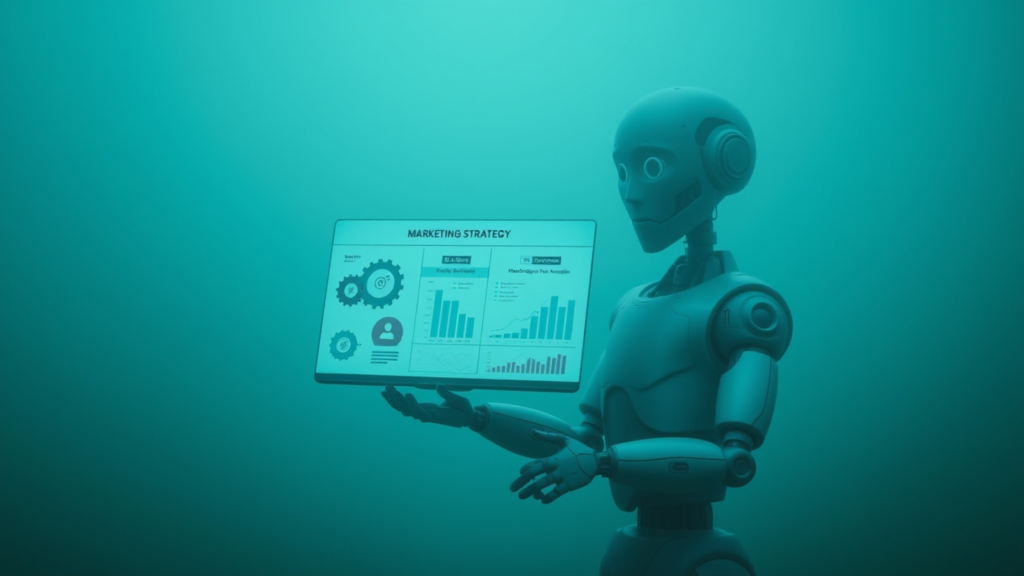Marketing Analysis 2025: Trends, Tools, and Tactics for Smarter Strategies

As the digital landscape continues to evolve, so does the arena of marketing analysis. By 2025, marketing professionals face a dynamic environment rich with both challenges and opportunities.
Understanding and adapting to the key trends is essential for businesses looking to not just survive but thrive. This in-depth guide explores critical indicators for when to amplify or refine your marketing strategies, ensuring your business remains competitive and effective.
Economic Indicators and Market Conditions

Recognizing Opportunities in Economic Growth
In 2025, the U.S. economy showcases significant growth with stable inflation, creating an ideal backdrop for escalated marketing initiatives. Consider these factors:
- Growth Indicators: With the GDP showing robust growth, it’s an opportune moment to increase marketing investments.
- Consumer Confidence: High consumer confidence typically boosts spending. Leverage this by deploying targeted marketing campaigns that align with consumer sentiments.
Adapting to Global Economic Trends
Global economic stability suggests a 2.8% annual growth rate through 2026. It’s vital to explore beyond local markets:
- Emerging Markets: Tap into regions showing rapid economic development. For instance, companies like Xiaomi have successfully captured new markets by tailoring products and marketing to local preferences.
- Cultural Adaptation: Customize marketing campaigns to resonate across different cultural landscapes, enhancing global appeal and effectiveness.
Responding to Interest Rate Fluctuations
Interest rate adjustments can significantly affect consumer spending and borrowing costs:
- Rate Changes: Monitor central bank updates closely and adjust marketing strategies to align with consumer financial capabilities.
- Budget Flexibility: Maintain adaptable marketing budgets that can respond swiftly to economic shifts.
Technological Advancements and AI Integration

Capitalizing on AI-Driven Marketing
Artificial intelligence is transforming marketing by automating operations, personalizing customer interactions, and enabling real-time decision-making:
- Automation Tools: Implement AI tools to streamline routine tasks, allowing teams to focus on creative and strategic initiatives.
- Personalization: Deploy AI systems for deep personalization, proven to boost engagement, as seen with Netflix’s recommendation engine enhancing viewer satisfaction and retention.
Enhancing Data Analytics Capabilities
The ability to analyze large data sets is increasingly crucial:
- Advanced Tools: Use sophisticated analytics tools to extract actionable insights, guiding more effective marketing strategies.
- Real-Time Data: Employ real-time data to fine-tune marketing campaigns, ensuring maximum impact.
Consumer Behavior Shifts

Video Marketing Dominance
The preference for video content continues, with platforms like TikTok and Instagram Reels leading the trend:
- Engaging Content: Create captivating video content that grabs attention quickly and succinctly conveys your message.
- Platform-Specific Strategies: Customize content for each platform to enhance engagement and reach, mirroring the success of brands like Dove with their real beauty sketches going viral.
The Evolution of Voice Search and Commerce
The rise in voice-activated technology necessitates an optimization for voice search:
- SEO for Voice: Focus on optimizing content with conversational keywords that reflect natural speech patterns.
- Localized Content: Enhance local SEO efforts, as voice searches often have a local intent.
Data Privacy and First-Party Data

Navigating Increased Regulatory Scrutiny
With stringent data privacy regulations in place, compliance and transparency are paramount:
- Compliance: Stay abreast of privacy regulations and ensure all marketing activities are compliant to mitigate risks.
- Transparency: Foster trust by being transparent about data collection and usage practices.
Utilizing First-Party Data Effectively
Leveraging first-party data is increasingly important for targeted marketing:
- Data Collection: Improve data collection methods to secure comprehensive and accurate customer information.
- Usage Strategies: Utilize this data to tailor experiences and refine marketing strategies, making them more pertinent to individual consumers.
Conclusion
The shifting marketing landscape in 2025 requires agility and strategic foresight. By understanding these pivotal economic, technological, and behavioral trends, your business can develop marketing strategies that are not just effective today but will continue to succeed in the future.
Consider conducting a thorough audit of your current marketing plans, aligning them with the trends outlined here, to ensure your strategies are poised for 2025 and beyond.
Stay proactive by integrating these insights and approaches into your marketing efforts to keep your business at the cutting edge of industry developments.

Saletancy: Your Strategic Digital Marketing Partner in 2025
In the swiftly evolving digital marketing landscape of 2025, partnering with a cutting-edge agency like Saletancy is crucial for businesses aiming to leverage the latest technologies and strategies. Saletancy stands out for its comprehensive suite of digital marketing services that cater to all facets of modern marketing demands.
Personalized Campaigns with Advanced Analytics: Saletancy excels in harnessing data analytics to craft personalized marketing campaigns. Their use of sophisticated tools allows for real-time insights, ensuring that marketing efforts are not only precise but also impactful.
AI-Driven Marketing Solutions: At the forefront of AI integration, Saletancy employs artificial intelligence to optimize campaign effectiveness and efficiency. From automating routine tasks to refining customer interaction through AI-driven personalization, they provide solutions that significantly enhance client engagement and conversion rates.
Adaptability to Market Dynamics: Understanding the importance of flexibility in a volatile economic environment, Saletancy offers marketing strategies that are adaptable to changing market conditions and interest rates. This approach helps businesses stay resilient and responsive, maximizing ROI in various economic scenarios.
By choosing Saletancy, businesses can expect a partnership that not only understands the dynamic digital marketing world of 2025 but also delivers strategies that are tailored, tech-savvy, and timely. Whether it’s tapping into emerging markets or leveraging first-party data for targeted campaigns, Saletancy provides the expertise and innovation needed to drive success.
What is marketing analysis?
Marketing analysis involves studying market dynamics, customer preferences, and other environmental factors to guide business strategies. It uses data and trends to predict future needs, innovate products, and optimize marketing campaigns for better alignment with consumer demands.
How can AI improve marketing strategies by 2025?
AI enhances marketing strategies by automating tasks, personalizing customer experiences, and analyzing large data sets for insights. By 2025, AI tools can help businesses target their advertising more effectively, predict customer behavior, and create content that resonates with specific audience segments.
What economic indicators are important for marketing planning in 2025?
Key economic indicators include GDP growth rates, consumer confidence indices, and global economic trends. Monitoring these can help businesses predict market conditions and tailor their marketing strategies to capitalize on economic upturns or prepare for downturns.
How will data privacy changes impact marketing by 2025?
As data privacy regulations become stricter, businesses must adapt by ensuring their marketing practices comply with new laws. This includes securing customer consent for data collection and being transparent about how data is used. These changes will require marketers to rely more on first-party data and less on third-party sources.
What trends are driving video marketing in 2025?
Short-form videos, platform-specific content, and interactive features are leading trends in video marketing. Platforms like TikTok and Instagram Reels continue to dominate, compelling marketers to create visually engaging and concise content that captures audience attention quickly.
How important is voice search optimization in 2025?
Voice search optimization is crucial due to the rising use of voice-activated devices. Marketers should focus on natural language processing and local SEO to improve visibility in voice search results, making it easier for consumers to find their products and services through devices like smartphones and smart speakers.
What are the best strategies for using first-party data in marketing?
The best strategies include enhancing data collection methods to gather detailed customer information, using analytics tools to derive insights from this data, and applying these insights to personalize marketing efforts. This helps improve customer experiences and boost loyalty and engagement.
How can businesses adapt to global market conditions in 2025?
Businesses can adapt by expanding into emerging markets, localizing their marketing messages to fit different cultural contexts, and adjusting their marketing budgets in response to global economic fluctuations. Understanding regional differences and consumer behavior across markets is key to effective global marketing.
What are the challenges of integrating AI into marketing strategies?
Challenges include the high initial investment in technology, the need for skilled personnel to manage AI tools, and potential customer concerns about privacy and data security. However, with proper implementation, the benefits of AI can significantly outweigh these challenges.
How can companies ensure their marketing strategies are compliant with data privacy laws in 2025?
Companies can ensure compliance by staying updated on legislation changes, implementing secure data handling practices, and fostering transparency with customers about how their data is used. Investing in privacy-focused technologies and consulting with legal experts can also help businesses navigate the complexities of data regulations.